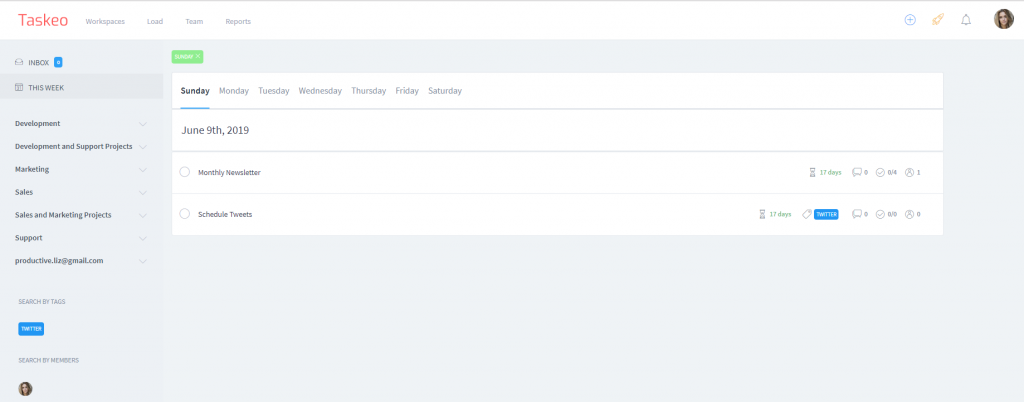What do you think about when hearing about “team productivity”?
Pomodoro timers on your employees’ desks? Everyone using the Eisenhower Matrix on a regular basis? Or maybe you think that a good project management system is the only thing you need?
There’s more to it. So much more.
None of these fancy techniques won’t help if you don’t understand what team productivity is really about. And it’s a phenomenon a little more complicated than assigning the right tasks to the right people.
You can, of course, work on improving your efficiency as a group. But in reality, it’s just one of the two levels of team productivity.
And you’ll learn all about it from this post.
Level 1: Team Productivity
First of these two mentioned levels is the one you’re probably most interested in: the team productivity. The efficiency of your people as a group, results of mutual efforts put into projects and assignments.
There are several elements that make up for everything that we understand as team productivity. Simplifying, team productivity describes how effectively your team executes the tasks through efficient work organization and effective communication.
And here are some of the elements of team productivity level you may want to look at.
How effective are your meetings?
If meeting up with your team feels like a huge waste of time, then you’re probably doing it wrong.
Team meetings should be relatively short, on point and with a lot of benefit to you and your people. You should exchange feedback or ideas and leave with a firmly set course of action for the upcoming days. If any of those elements are lacking, then you’re likely to waste time talking without agreeing on anything.
- Time-gate your meetings; when you know you’ve got little time, you’ll be careful with talking about things that don’t matter. You’ll also prevent yourself from entering hours-long sessions that will leave you and your people drained
- Come prepared; know exactly what you want to tell your team, what you want to ask them and what decisions you want to make
- Organize your meetings in advance. You can use software to prepare for meetings just as much as you prepare for your projects. Use Taskeo’s kanban board to set priorities, invite people and organize the upcoming meetings.
Read More: Organizing Meetings With Taskeo
How effectively does your team communicate?
The way your team communicates defines all other aspects of your teamwork. If there are misunderstandings and messages left unread or undelivered, you can’t hope for effective and smart project execution.
How long does it take for the employees to get answers to their questions? If they need hours to get an answer or explanation that will move the project forward, it’s obvious that the work slows down significantly.
You may want to nurture some good communication habits or even train your employees in the art of communicating with each other. There are also some other tricks that will instantly improve the clarity of communication in your team.
- Stick to one communication channel; if you employ people working remotely or your people work on different shifts, make sure there is only one channel they use for communication. Ideally, you should keep all the task-related discussion in the comment section of your project management platform.
- Define roles. If a less experienced employee has a question, they should never be confused to whom they should direct it.
- Whatever communication style your company has adapted, make sure you cultivate it and stick to it. Keep it unified and avoid deviating from what people once accepted.
Are there bottlenecks or weak points in your team’s workflow?
Part of understanding and improving team productivity is to become aware of any bottlenecks or possible pain points that your team faces.
The troublesome situations can vary. Perhaps some stage of work is taking much longer than it should due to the inexperience of your employees. Perhaps slow communication is hindering the progress. Or maybe there’s an element of your workflow that your people have particular issues dealing with?
These and many situations can become a hit for your team productivity. That’s why it’s mandatory for you to find all the weak points as soon as possible and then fix them.
This is where time tracking and reporting software comes in handy. In Taskeo, you can easily track the time spent on tasks or compare how long do different employees take to complete a similar assignment.
- Analyse your efficiency frequently and from close to find possible weak points of your workflow that need attention and improvement
Is the work distributed evenly?
One of the biggest mistakes that can seriously hurt your team productivity is to allow some of your people to sit idle while others are overloaded with assignments.
Ideally, you should have as little items in progress as possible. This way, your team can keep a laser focus on their assignments.
However, sometimes it happens that some of your colleagues have more work than others. Other times, there are slow periods followed by chaotic deadline chasing.
Neither is good.
- Do your best to distribute work evenly. Avoid overwhelming some people while others have little to no tasks at their tabs
- Follow the same pattern for your timeline planning. Make sure the work goes at a steady rhythm to reduce bouncing between slow and hectic times

How much time do you spend on tasks?
Not only every company is different but even more so – every employee is. People have different capabilities and complete their tasks at a different rate. However, eventually, you’ll learn what’s your team’s average for specific tasks.
Using time tracking and reporting software, you can analyze how much time is spent on tasks in comparison to your team average. With this information in your hand, you can look for causes that affected your workflow positively or negatively at the time.
- Analyze how much time does your team need to complete different tasks
- Compare the tasks completion time with that average and look for reasoning behind it
How many projects do you have open and how many do you close?
The number of open project versus projects closed in a given period can be a very clear indicator of the health of your workflow.
If you open more projects than you complete, then there is something wrong happening. It’s up to you to find the reason behind it – is it because your team are notorious loop openers? Or maybe you keep abandoning projects for that or other reason?
- Before you commit to another project, make sure you finish what you started before. You can use Taskeo to help you wrap up all your pending projects
- Do your best to minimize work in progress
- Make sure all completed tasks and projects are marked as such by your team members
Read More: 6 Steps To Finishing What You Start. Always
Team Productivity – Summary
These are just some of the points to think about when you’re trying to improve your team productivity. But there are more elements to this puzzle – and they can be very specific for you and your people.
So don’t be afraid to dig deep and understand what truly defines the team level productivity in your company.
Level 2: Personal Productivity
You want your people to work smarter and be more efficient? Then you should avoid making the mistake of trying to improve their team productivity only. Because, just as we said in the beginning, real productivity happens on two levels.
And the second level is a personal one.
It defines how each of your colleagues works individually and how effectively they tackle their assignments.
What’s their personal to-do list like?
If you look at your team member’s daily to-do list, what is it like? Is it packed with tasks? Or maybe it’s half-empty? Is it too ambitious or too much in their comfort zone? Are the tasks actually relevant and important?
Looking at a person’s task list, you can tell whether they’re actually moving your business forward or they’re just being busy with nothing in particular.
- encourage your team members to be ambitious in their to-do list making
- at the same time, promote reasonable planning within doable deadlines
- introduce your team to the theory of SMART goals and Eisenhower Matrix
- teach your people to tell the difference between tasks that really matter for your company and those which don’t really change anything
Do your people have easy access to their tasks?
One of the biggest issues that an employee can face is not seeing their tasks arranged in a neat and logical to-do list. There are a lot of project management systems that claim to boost your team productivity but they fail to provide this basic element: a personal task list.
And in case you’re wondering, yes, Taskeo has one. Our Dashboard lists all of your tasks from all the projects you’re involved in. Thanks to this, you don’t even have to visit every single kanban.
The point here is simple: if your people don’t have easy access to all their tasks and they need to search for their assignments, they’re bound to omit something at some point.
- make sure your project management system supports personal task management
- encourage your people to actively use their personal to-do list and revisit it as often as possible
- form every assignment in a clear way that will show correctly on your colleague’s task list

Are your people reactive or proactive?
One of the key elements of increasing an employee’s personal productivity is for them to want it to increase.
This directly translates to whether your people actively seek ways to improve the life of your team. After all, they may just passively react to events and assignments. But not only that – proactive employees react to situations occurring on their own, without someone else pointing them to the arising task.
Encourage your people to be proactive instead of reactive. This can be done in a variety of ways – from providing workflow feedback to testing and experimenting with current working patterns.
- within your team, nourish the feeling of being a part of something that you should actively care for
- provide and accept feedback to your existing workflow and by doing so, set an example to follow
- if one of your team members manages to streamline some process, try to make it a normal course of action for the rest of your team
- work towards a situation when every employee picks up tasks on their own as soon as they spot a problem, instead of passively waiting for an assignment
Personal Productivity – Summary
Just like in the case of team-level productivity, the personal productivity of your employees contributes to the general health of your workflow. These are the points you can use to evaluate how efficient are the members of your team. But again, don’t stop here – there are so many factors specific to your company.
Final Thoughts
To summarize it all: when it comes to improving productivity in your team, you need to understand it’s a phenomenon happening on two levels rather than just one. Work on how you execute projects as a group but remember that your people need to improve their personal productivity as well. Look for pain points you can solve and use the right tools for doing so.






